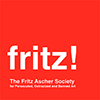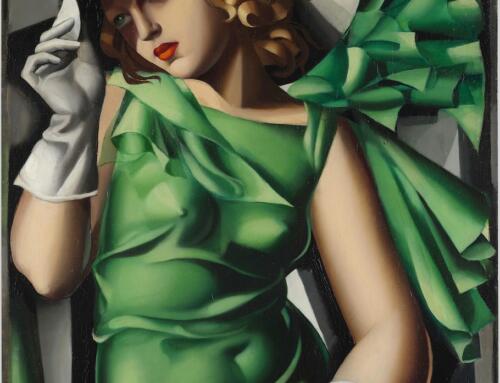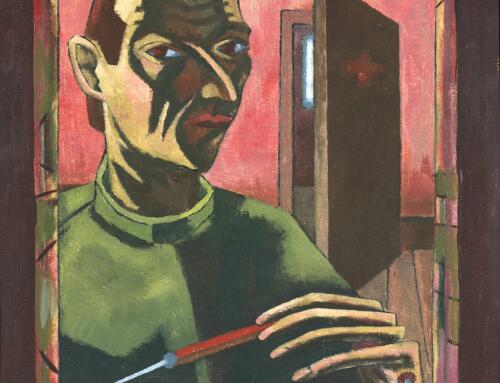Dear Friends,
Immediately after Adolf Hitler’s ascent to power in Germany in 1933 the Nazi government started persecuting Jews. Within months, tens of thousands of Jews left Germany. But soon emigration slowed considerably as visas became impossible to obtain.
About 10,000 children were saved by leaving the country on a Kindertransport to Great Britain between December 1, 1938 and September 1, 1939. Later this month, we are screening the documentary My Knees Were Jumping; Remembering the Kindertransports and feature a discussion with Melissa Hacker, the film director.
There were also individuals who stood up against the Nazi regime by saving people from persecution. Did you know that Aristides de Sousa Mendes saved artist Tamara DE LEMPICKA’s daughter and stepdaughter?
Image above: Tamara DE LEMPICKA, Portrait of Lizette; https://sousamendesfoundation.org/family/kuffner-lempicka
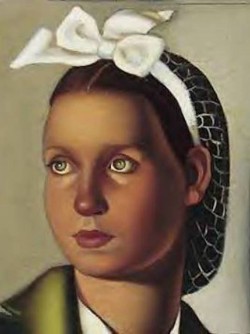
Tamara DE LEMPICKA, Portrait of Lily Kuffner; https://sousamendesfoundation.org/family/kuffner-lempickaime
In May and June of 1940, many thousands of refugees lined up outside the Portuguese consulate in Bordeaux, France, hoping to receive visas to get out of France. A Portuguese visa allowed them to escape the horrors of Nazi persecution with safe passage through Spain to Portugal, from where they could travel to other parts of the globe.
As the Portuguese consul stationed in Bordeaux, France, Aristides de Sousa Mendes issued thousands of visas during that time, with the period of highest intensity lasting around twelve days, from June 12-23, 1940. He was severely punished for ignoring Antonio de Oliveira Salazar’s directive – the infamous “Circular 14″ – to all Portuguese diplomats to deny safe haven to refugees, including explicitly Jews, Russians, and stateless persons who could not freely return to their countries of origin.
Aristides de Sousa Mendes issued two visas in Bordeaux on June 12, 1940. The two stepsisters crossed into Portugal and in July 1940 sailed on the Nea Hellas from Lisbon to New York, rejoining their parents.
The Kindertransport saved almost 10,000 children from Nazi Germany, Austria, Czechoslovakia and Poland from certain death, just before the outbreak of World War II in 1939.
Starting August 13, you can view the film My Knees Were Jumping; Remembering the Kindertransports on your home device (until August 21).
A link will be provided to all who register:
The screening will be followed by a discussion with the film director. A link will be provided to all who register:
WEDNESDAY, August 20, 12:00PM EDT
Ruth Morley and Lore Segal,
Kindertransport Survivor Artists on Film
Film Screening and
Conversation with Director Melissa Hacker
Join film director Melissa Hacker in conversation with Rachel Stern about My Knees Were Jumping; Remembering the Kindertransports. In the talk, Melissa will show a new short film on the Kindertransports, 256,000 miles from home, which travels with four Kindertransport survivors as they retrace the journey they took 80 years earlier, as unaccompanied child refugees.
In the nine months just prior to World War II close to 10,000 children were sent, without their parents, to the United Kingdom from Nazi Germany, Austria, Czechoslovakia and Poland. These children were rescued by the Kindertransport movement. Most of the children never saw their parents again. Those courageous parents who had the strength to send their children off to an unknown fate soon boarded transports taking them to concentration camps. The story of the Kindertransports is an extraordinary piece of history – untold far too long. The children who lived the trauma and terror of being uprooted from secure homes tell compelling stories.
WATCH THE TRAILER:
The filmmaker Melissa Hacker’s mother, the Academy Award nominated costume designer Ruth Morley, neé Birnholz, (Taxi Driver, Annie Hall, The Hustler, The Miracle Worker, Tootsie, and many more classic American movies) fled Vienna on a Kindertransport in January 1939. She is a strong presence in the film talking about her experiences alongside other former child refugees, many of them women. Ruth and the writer Lore Segal, also a Kindertransport survivor from Vienna, remember the antisemitism of schoolmates and neighbors, the violence and their fears on November 9, 1938, the difficult decision their parents had to make to send them off into the unknown, and their lives in the United Kingdom. We learn about their postwar lives in North America, and hear from their children, the second generation. Hacker creates space for all to talk and reflect, making this film a moving and invaluable record of testimony.
Melissa Hacker is the daughter of a Kindertransport survivor from Vienna, Austria, and the Executive Director of the Kindertransport Association. Melissa is a filmmaker who made her directing debut with the documentary My Knees Were Jumping; Remembering the Kindertransports, which was short-listed for Academy Award nomination and shown worldwide. Honors received For Ex Libris, A Life in Bookplates, Melissa’s current work in progress, include a Fulbright Artist-in-Residence award in Vienna, and residencies at Yaddo, VCCA, Playa, Willapa Bay AIR, Saltonstall, Millay, and the LABA Laboratory for Jewish Culture.
Artist Samson Schames and his wife Edith were also able to flee Nazi persecution to Great Britain:
WEDNESDAY, August 27, 12:00PM ET ONLINE
The Three Exiles of the German-born artist Samson Schames (1898-1967)
Conversation with Annika Friedman (Germany),
Rachel Dickson, PhD (UK) and Ori Z Soltes, PhD (USA)

Samson Schames, Boat Docked at Harbor, 1952. Gouache and ink on paper, 10 x 13 in., Leo Baeck Institute New York 2023.126
In this virtual event, the German-born artist Samson Schames (1898-1967) will be discussed by a panel of experts: Annika Friedman (Germany) will elaborate on the artist’s beginnings in Frankfurt, Rachel Dickson, PhD (UK) will give an insight into the work he made in British exile, and Ori Z. Soltes, PhD (USA) will speak about the work he created in his new home, New York. The presentations will be followed by a discussion and Q&A moderated by Rachel Stern.
Samson Schames came from a long-established Jewish family in Frankfurt am Main (Germany). With the support of his uncle, renowned gallery owner Ludwig Schames, he made his way into the 1920s art scene and began his training as a painter, graphic artist, and stage designer. Schames’ designs, drawings, and oil paintings from his time in Frankfurt testify to his deep connection to his hometown and her landscapes.
After the National Socialists rose to power in 1933, Schames was only able to exhibit his works in exhibitions of the Jüdischer Kulturbund or in his own studio. In 1937, at least seven of his works were confiscated from public collections as part of the Nazi campaign against “Degenerate Art.”
Schames fled to England via Holland after the Kristallnacht pogroms of November 1938. In 1940, he was interned in Huyton Camp, near Liverpool, as a so-called ‘enemy alien’. After his release he exhibited extensively in London and became known for his mosaics in which he incorporated broken and found materials scavenged from bombsites.
In 1948, Schames immigrated to the USA, where he continued his career until he died in 1967.
This event is part of the online series Flight or Fight. stories of artists under repression.
This month, we feature two important exhibitions in Germany:

Defiance: Jewish Women and Design in the Modern Era is on view until November 23, 2025 at the Jewish Museum Berlin.
This exhibition is the first to honor the work of German-Jewish craftswomen who, during a time marked by exclusion and upheaval, forged their own paths. It presents the lives and works of more than 60 Jewish female designers and demonstrates how they overcame societal barriers to fight for change and visibility — and how they paved the way for other women in the process.
Most of the artists featured in the exhibition are unknown today.
Do you remember Erik Riedel’s talk about Léo Maillet (1902-1990), who escaped from a deportation train bound for Auschwitz and lived in the French Cévennes under a false identity from 1942 onwards? The small exhibition at the Jewish Museum Frankfurt is worth a trip.
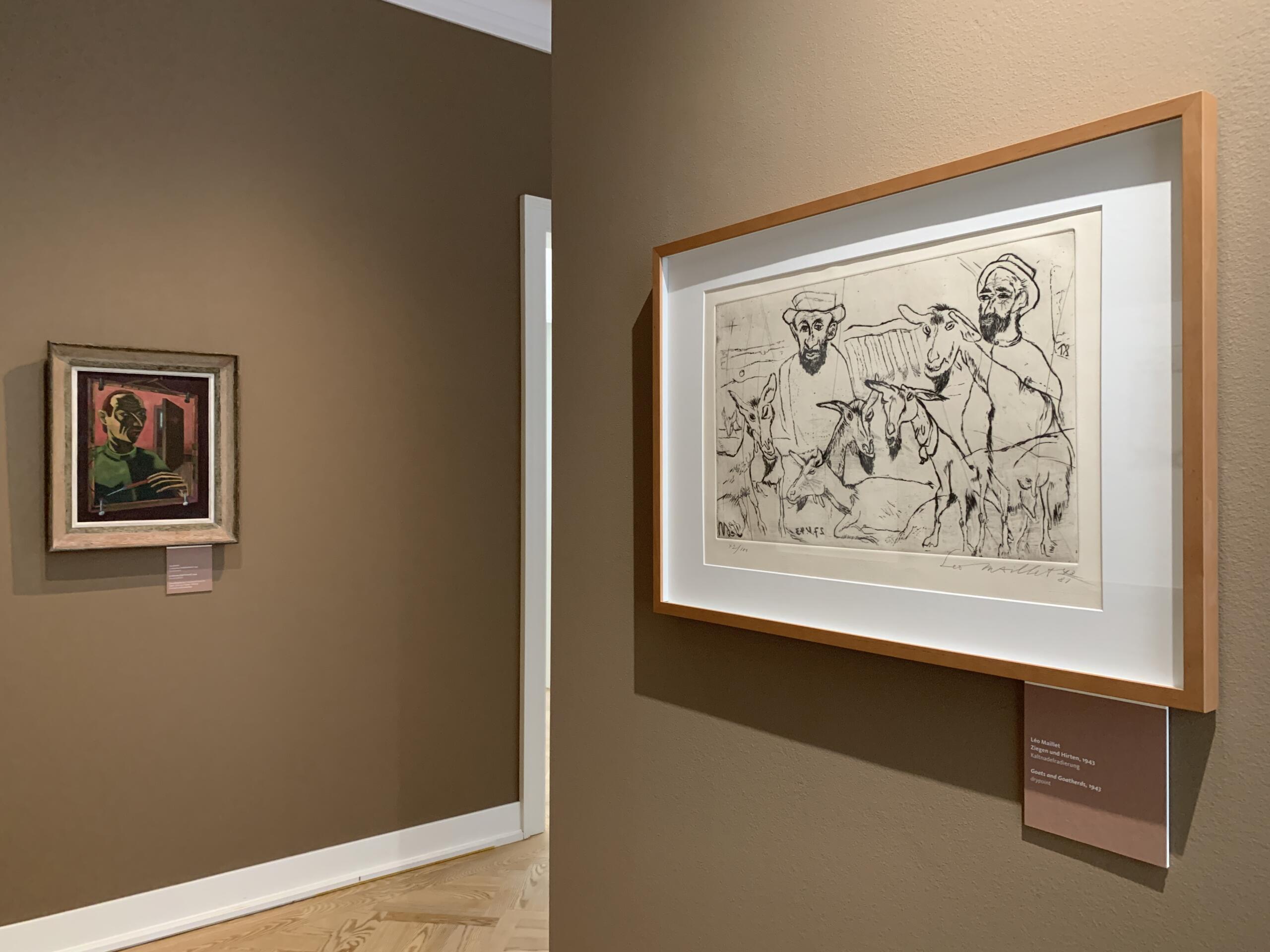
Léo Maillet. The Broken Mirror is on view until November 16, 2025 at the Jewish Museum Frankfurt.
The work of the painter and graphic artist Léo Maillet, who changed his name in exile from the original Leopold Mayer, reflects the numerous upheavals in his biography.
The self-portraits Maillet created in exile form the core of this special exhibition; they offer symbolic expression to the persecuted artist’s contradictory and precarious existence.
You can find the recordings of our virtual July events here, to watch, re-watch and share:
